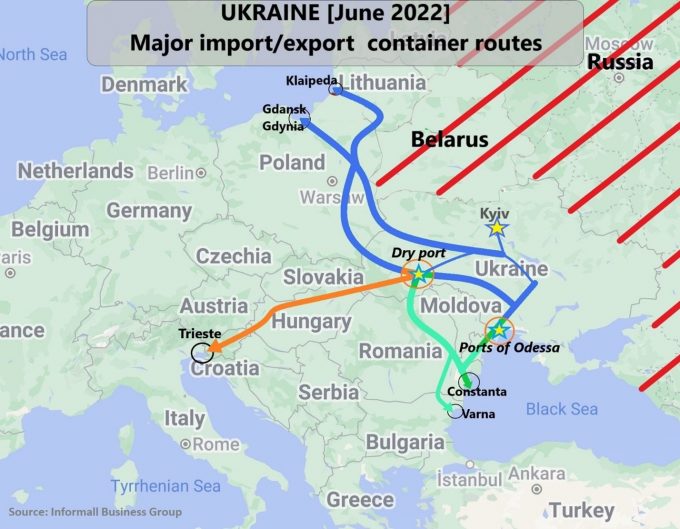USTR fees will lead to 'complete destabilisation' of container shipping alliances
The USTR fees for China-built shipping threaten a “complete destabilisation” of the ocean alliances, as ...

Shipping lines handling Ukrainian cargo are beginning to loosen the terms on which freight can be transported into the country.
They are reducing some of the complications of importing non-military supplies into the country, which has been at war with Russia since 24 February.
Freight costs to and from Ukraine have increased as a result of the war, mainly because shipping lines that can no longer insure cargo or equipment moving into a war zone are demanding hefty deposits for equipment as ...
Outlook for container shipping 'more uncertain now than at the onset of Covid'
Shippers warned: don't under-value US exports to avoid tariffs – 'CBP will catch you'
Cancelled voyages take the sting out of spot rate declines this week
New Houthi warning to shipping as rebel group targets specific companies
Teamsters union vows UPS will be 'in for a hell of a fight' over jobs cull
K+N CEO unveils impact of US import tariffs on China-origin goods
Blanked sailings in response to falling demand 'just a stop-gap solution'
CMA CGM to reflag box ship as the French carrier eyes growing Indian market
More pressure on transpacific rates as carriers bet on a China-US trade deal
Boeing looks to resell up to 50 aircraft rejected by Chinese buyers
'Strong start' to 2025, despite market uncertainty, says Kuehne + Nagel
US Customs chaos means 'more downside risk than upside potential' for air cargo
Taiwan ministries act to mitigate effect of trade war on agriculture exports
Wan Hai joins box shipping 'arms race', but avoids Chinese yards for newbuilds
MOL signs up with Climeworks for direct air carbon capture and storage

Comment on this article